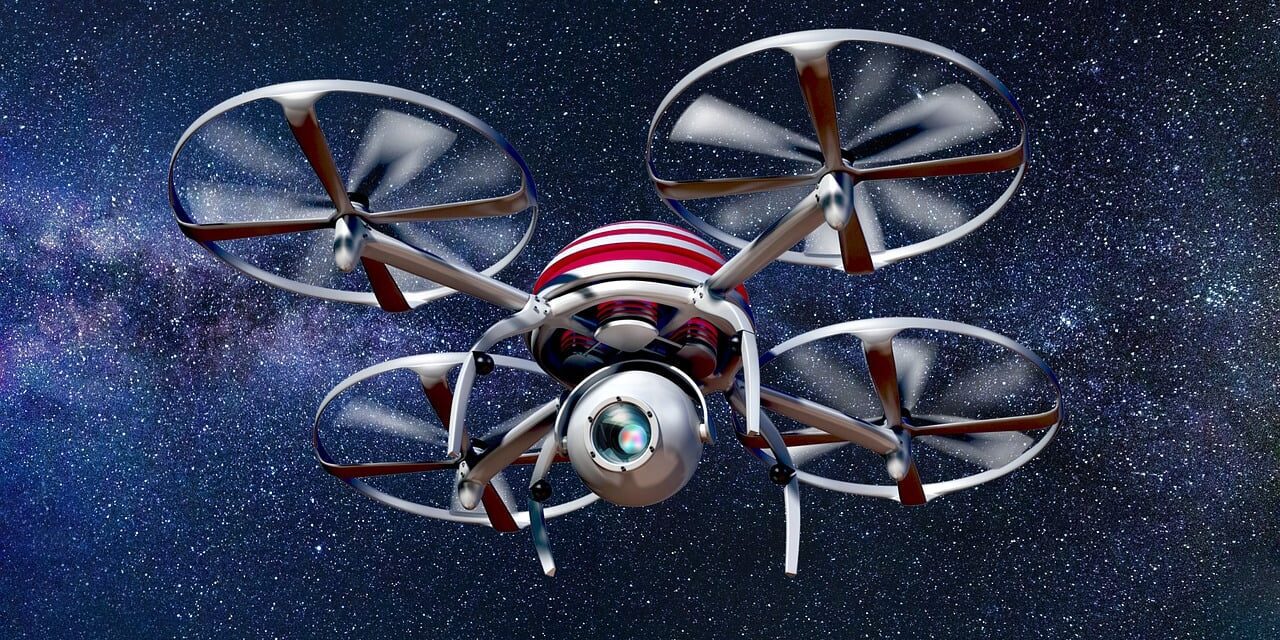Introduction to Rise of Drones
Rise of Drones In the not-so-distant past, drones were largely associated with military operations and surveillance. Fast forward to today, and these unmanned aerial vehicles have rapidly taken off, quite literally, in various aspects of our lives. Drones have evolved from being solely military tools into versatile, accessible, and innovative devices that are reshaping industries and providing new perspectives on the world. In this blog post, we’ll take a closer look at the rise of drones and explore the boundless potential they hold for the future of aerial technology.
The Rise of Drones Revolution
Drones, also known as Unmanned Aerial Vehicles (UAVs), are aircraft operated remotely by a human pilot or autonomously by onboard computers. They come in various shapes and sizes, from tiny consumer drones to large industrial ones, and they’re equipped with advanced technology, such as cameras, sensors, and GPS systems. The drone revolution has been driven by several factors:
- Affordability: Drones have become more affordable and accessible to consumers and businesses, making them a valuable tool for a wide range of applications.
- Advancements in Technology: Rapid advancements in technology have led to improvements in drone performance, battery life, and camera quality.
- Regulation: Governments and aviation authorities have established regulations to ensure safe and responsible drone use, fostering public confidence in the technology.
Exploring the Applications
Drones have found their way into various industries and applications, proving their versatility and potential. Here are some of the most prominent uses:
1. Aerial Photography and Videography
Drones equipped with high-quality cameras have transformed the way we capture images and videos. They provide breathtaking aerial perspectives for photographers, filmmakers, and content creators. From stunning landscapes to real estate listings, drones offer a unique angle on the world.
2. Agriculture
Agriculture has been revolutionized by drone technology. Farmers can monitor crops, assess soil quality, and apply fertilizers and pesticides with precision. Drones offer a cost-effective and environmentally friendly approach to farming.
3. Search and Rescue
Drones are increasingly used in search and rescue operations. They can access hard-to-reach areas, provide real-time video feeds, and assist in locating missing persons, making them invaluable tools for emergency responders.
4. Environmental Conservation
Drones play a crucial role in environmental research and conservation efforts. They can monitor wildlife, track deforestation, and assess the health of ecosystems. Their non-intrusive presence minimizes disturbances to wildlife.
5. Infrastructure Inspection
Inspecting bridges, power lines, and other infrastructure can be time-consuming and risky. Drones can access these structures safely, capturing high-resolution images and video for assessment, reducing risks to human inspectors.
6. Delivery and Logistics
Companies like Amazon and UPS are exploring the use of drones for package delivery. Drones could provide faster and more cost-effective delivery solutions in the near future, particularly for remote or rural areas.
Challenges and Considerations
While the potential of drones is undeniable, there are challenges to address:
1. Safety and Regulation
Drones must be operated safely and in compliance with aviation regulations. This includes restrictions on flying near airports, over people, and in certain airspace.
2. Privacy Concerns
The use of drones for surveillance and privacy invasion has sparked concerns. It’s crucial to strike a balance between innovation and privacy protection.
3. Technology Limitations
Drones have limitations, such as battery life, range, and payload capacity. Continued advancements are necessary to overcome these constraints.
The Future of Aerial Technology
As drones continue to evolve and diversify, the future holds endless possibilities. We can anticipate developments in areas like:
- Drone Swarms: Coordinated groups of drones working together for tasks like crop spraying or search and rescue missions.
- AI Integration: More advanced AI capabilities for autonomous navigation and data analysis.
- Urban Air Mobility: Personal drone transport systems for urban commutes.
- Environmental Monitoring: Enhanced capabilities for tracking climate change, wildlife populations, and more.
Conclusion of Rise of Drones
In conclusion, the rise of drones is reshaping the way we view and interact with the world. Their potential is vast, and as technology continues to advance and regulations adapt, we can expect drones to become an increasingly integral part of various industries and our everyday lives. As we explore the future of aerial technology, we must remain mindful of the challenges and responsibilities that come with this exciting evolution. Drones are not just flying gadgets; they are transformative tools with the power to change the world.





